Effects of Harbor Shape on the Induced Sedimentation; L-Type Basin
Abstract
:1. Introduction
2. Materials and Methods
2.1. Rouse Number
2.2. Numerical Model
3. Results
3.1. Free Surface Elevation
3.2. Current Velocity
3.3. Rouse Number
4. Discussion
Acknowledgments
Author Contributions
Conflicts of Interest
References
- Keshtpoor, M.; Puleo, J.A.; Gebert, J.; Plant, N.G. Numerical simulation of nearshore hydrodynamics and sediment transport downdrift of a tidal inlet. J. Waterw. Port Coast. Ocean Eng. 2014, 141, 0414035. [Google Scholar] [CrossRef]
- Keshtpoor, M.; Puleo, J.A.; Shi, F. Downdrift beach erosion adjacent to the Indian River inlet, Delaware, USA. Shore Beach 2014, 82, 31–41. [Google Scholar]
- Kian, R.; Yalciner, A.C.; Aytore, B.; Zaytsev, A. Wave amplification and resonance in enclosed basins; A case study in Haydarpasa Port of Istanbul. In Proceedings of the Currents, Waves and Turbulence Measurement (CWTM) 2015 IEEE/OES, St. Petersburg, FL, USA, 2–6 March 2015; Volume 11, pp. 1–7.
- Sawaragi, T.; Kubo, M. The motion of a moored ship in a harbour basin. In Coastal Engineering; American Society of Civil Engineers: New York, NY, USA, 1982; pp. 2743–2762. [Google Scholar]
- Van der Molen, W.; Monárdez Santander, P.; Van Dongeren, A.R. Modeling of Infragravity Waves and Moored Ship Motions in Tomakomai Port. In Proceedings of the Harbor Long Wave Conference, Yokosuka, Japan, July 2004.
- Kioka, W.R. Long period oscillations in a harbour caused by typhoon. In Coastal Engineering; American Society of Civil Engineers: New York, NY, USA, 1996; pp. 1491–1502. [Google Scholar]
- Jeong, W.M.; Chae, J.W.; Park, W.S.; Jung, K.T. Field measurements and numerical modelling of harbour oscillations during storm waves. In Coastal Engineering; American Society of Civil Engineers: New York, NY, USA, 1996; pp. 1268–1279. [Google Scholar]
- Bellotti, G.; Franco, L. Measurement of long waves at the harbor of Marina di Carrara, Italy. Ocean Dyn. 2011, 61, 2051–2059. [Google Scholar] [CrossRef]
- Rabinovich, A.B. Seiches and Harbor Oscillations. In Handbook of Coastal and Ocean Engineering; World Scientific Publishing Co.: Singapore, 2009; pp. 193–236. [Google Scholar]
- Thotagamuwage, D.T.P. Harbour Oscillations: Generation and Minimisation of Their Impacts. Ph.D. Dissertation, The University of Western Australia, Perth, Western Australia, 2014. [Google Scholar]
- Kakinuma, T.; Toyofuku, T.; Inoue, T. Numerical Analysis of Harbor Oscillation in Harbors of Various Shapes. Available online: https://icce-ojs-tamu.tdl.org/icce/index.php/icce/article/view/6840/pdf (accessed on 1 September 2016).
- Kian, R.; Pamuk, A.; Yalciner, A.C.; Zaytsev, A. Effects of tsunami parameters on the sedimentation. In Proceedings of the Coastal Sediments Conference (CS15), San Diego, CA, USA, 13–15 May 2015; Volume 8, pp. 67–74.
- Yeh, H.; Li, W. Tsunami scour and sedimentation. In Proceedings of the 4nd International Conference on Scour and Erosion, American Geophysical Union, San Francisco, CA, USA, December 2008; pp. 95–106.
- Zaytsev, C.; Yalciner, P.K. (Eds.) Tsunami Simulation/Visualization Code NAMI DANCE versions 4.9. NAMI DANCE Manual. 2010. Available online: http://www.namidance.ce.metu.edu.tr (accessed on 3 July 2014).
- Ergin, M.; Keskin, S.; Dogan, A.U.; Kadıoglu, Y.K.; Karakas, Z. Grain size and heavy mineral distribution as related to hinterland and environmental conditions for modern beach sediments from the Gulfs of Antalya and Finike, eastern Mediterranean. Mar Geol. 2007, 240, 185–196. [Google Scholar] [CrossRef]
- Pamuk, A. Assessment of Inland Tsunami Parameters and Their Effects on Morphology. Master's Thesis, Middle East Technical University, Ankara, Turkey, 2014. [Google Scholar]
- Kian, R. Tsunami Induced Wave and Current Amplification and Sedimentation in Closed Basins. Ph.D. Dissertation, Middle East Technical University, Ankara, Turkey, 2015. [Google Scholar]
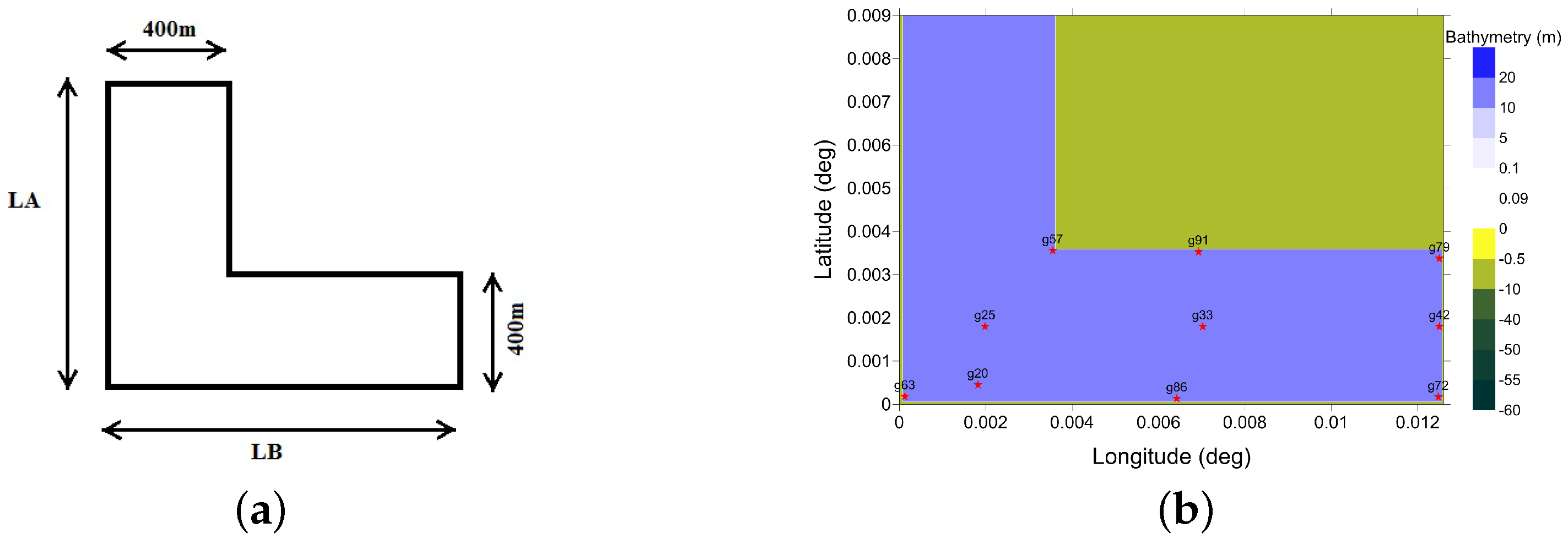
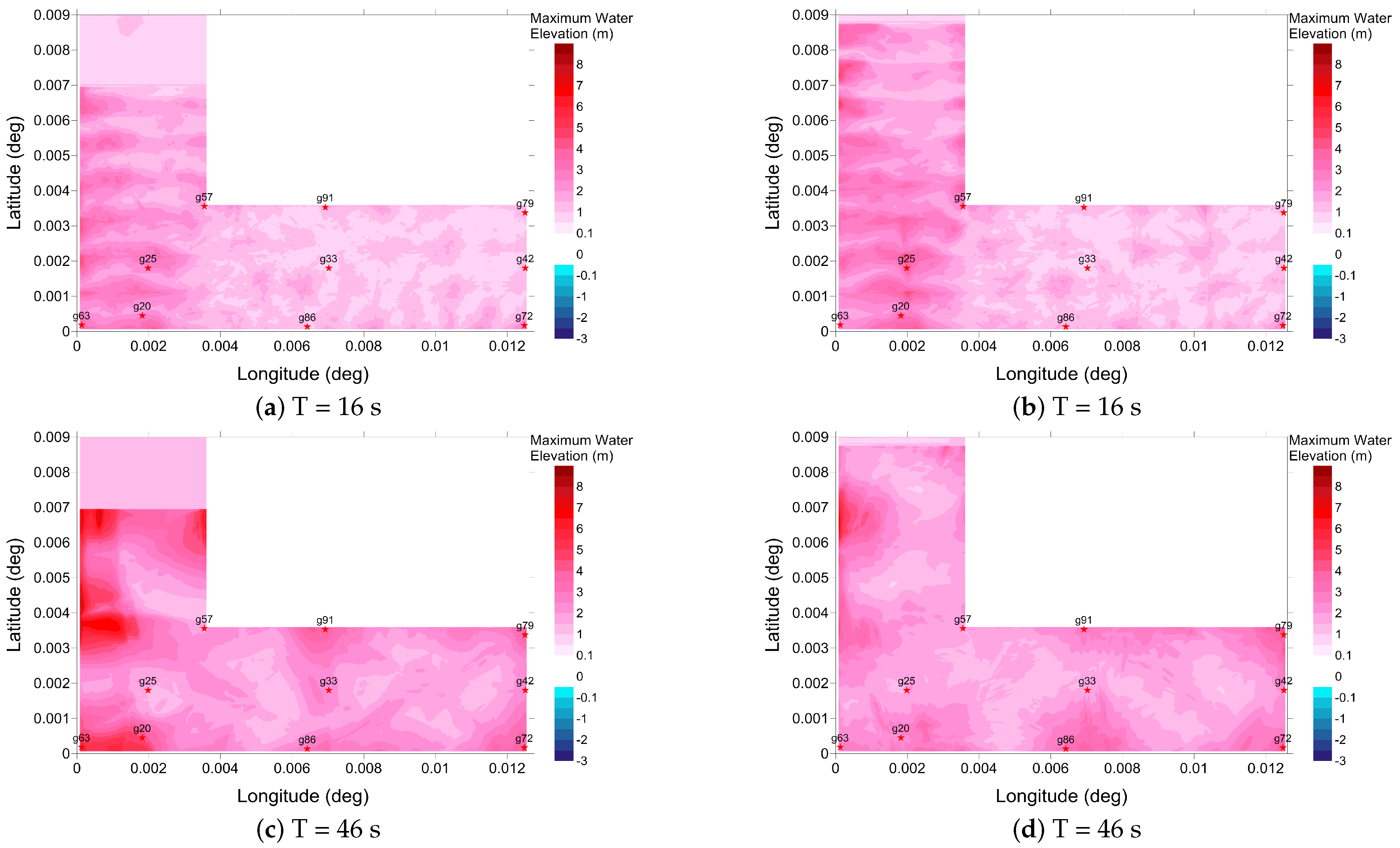
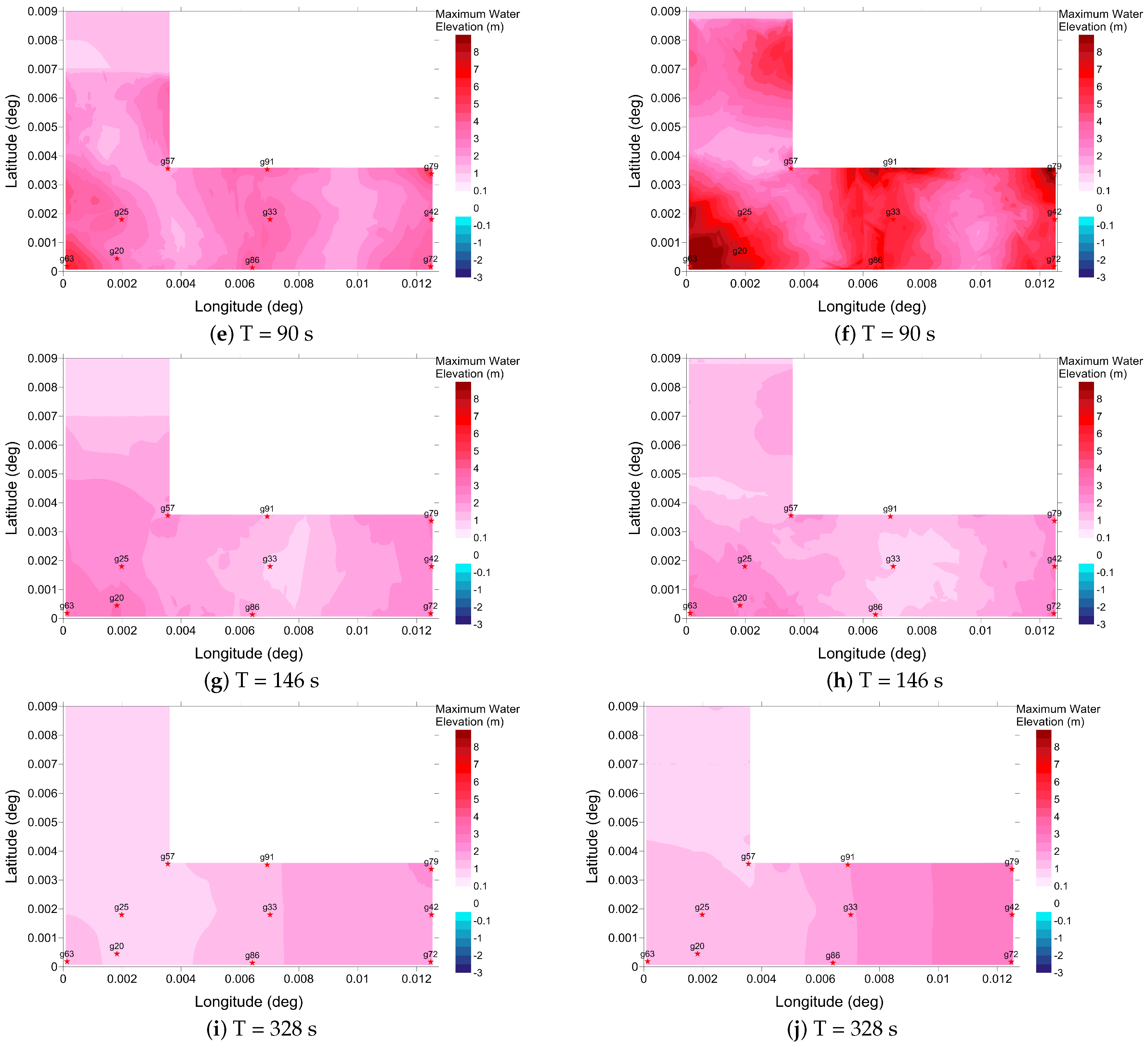
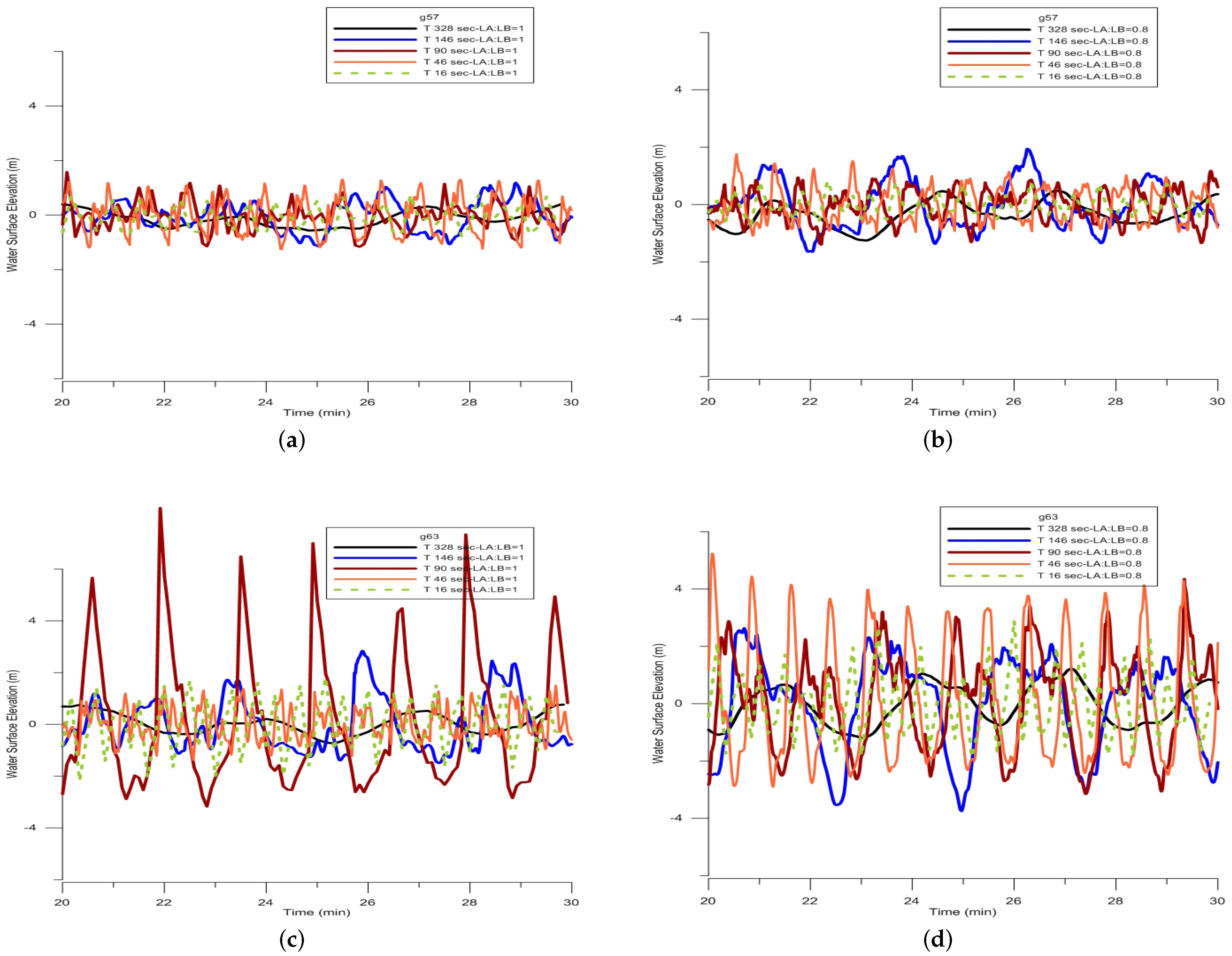
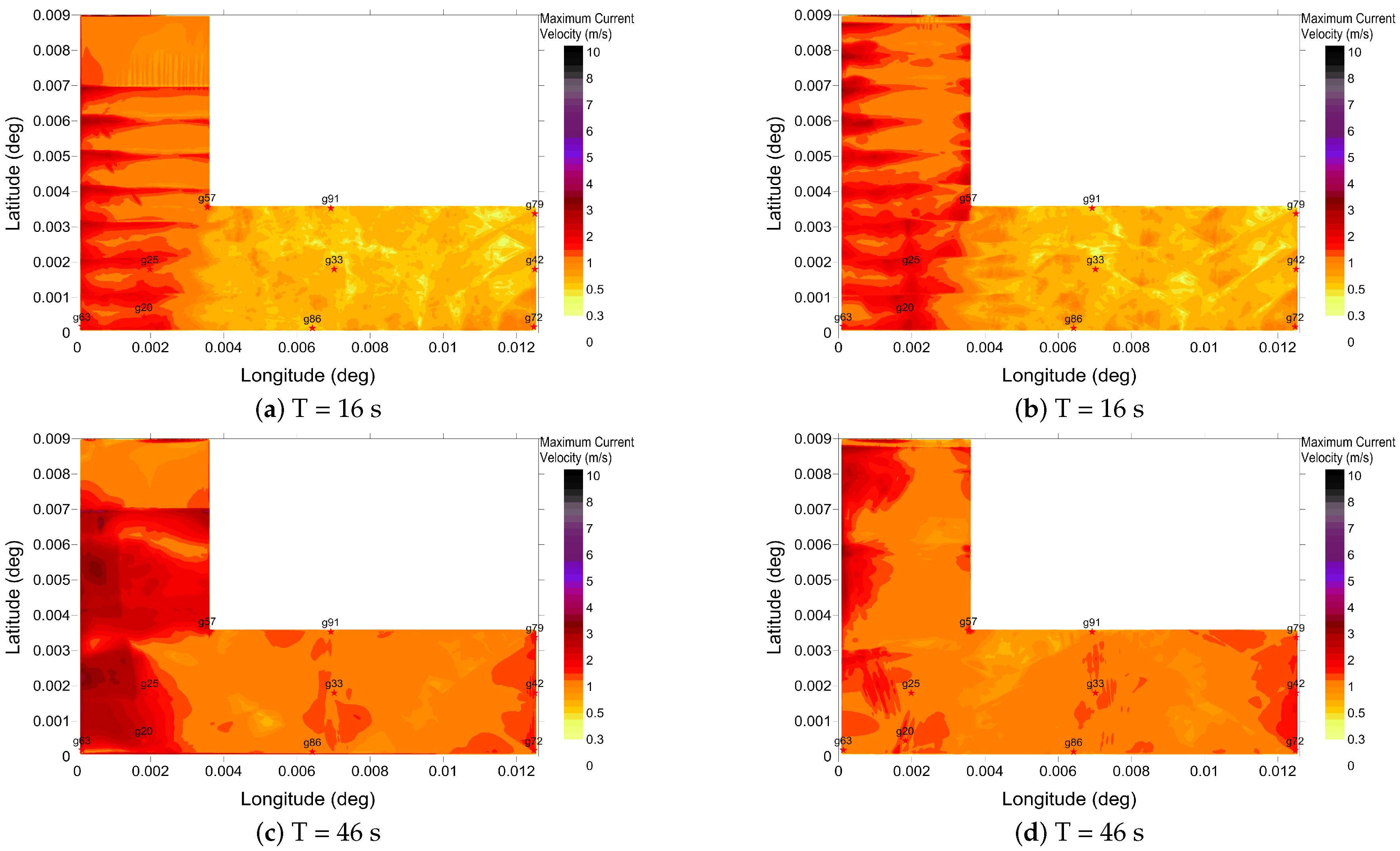

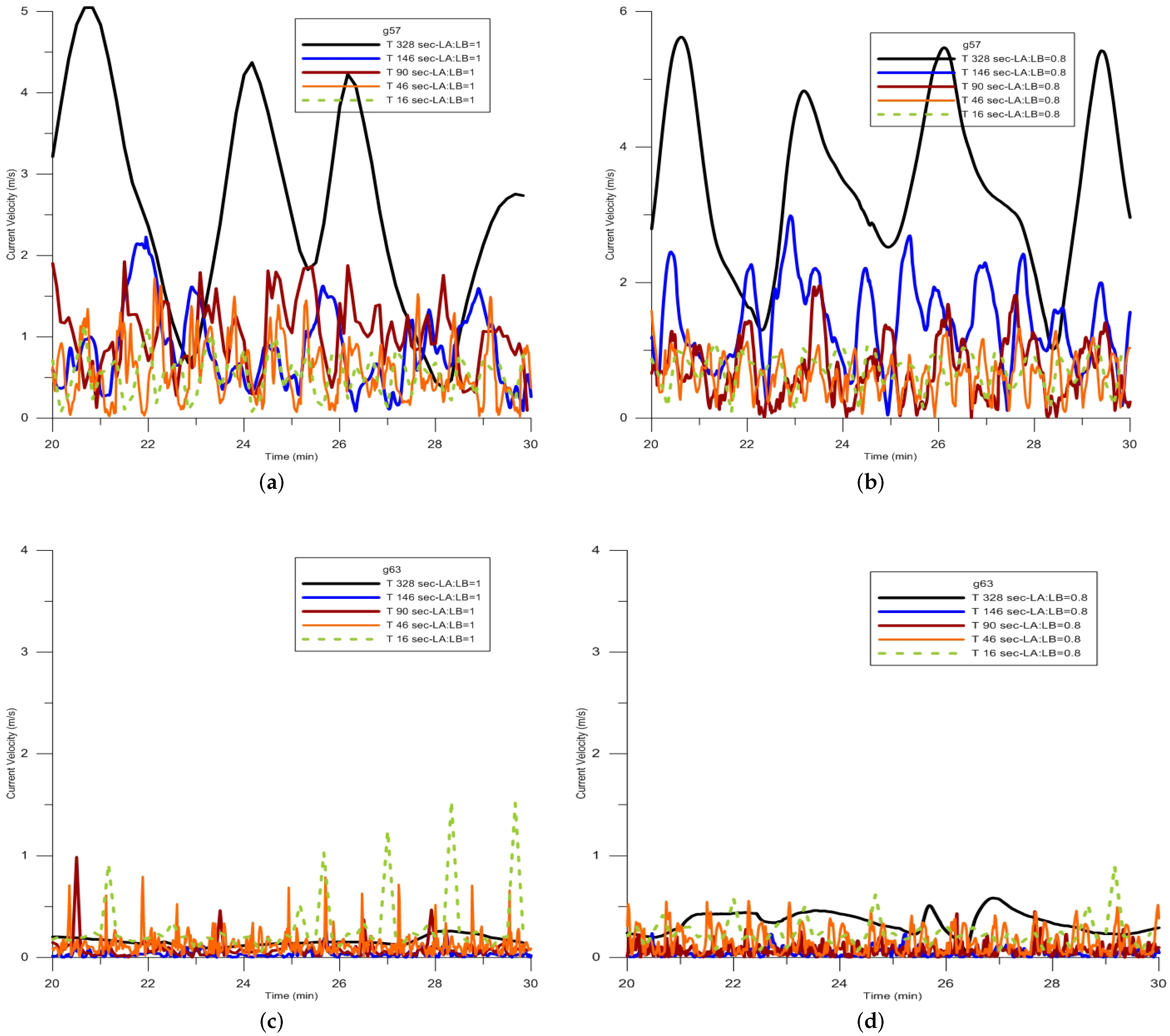

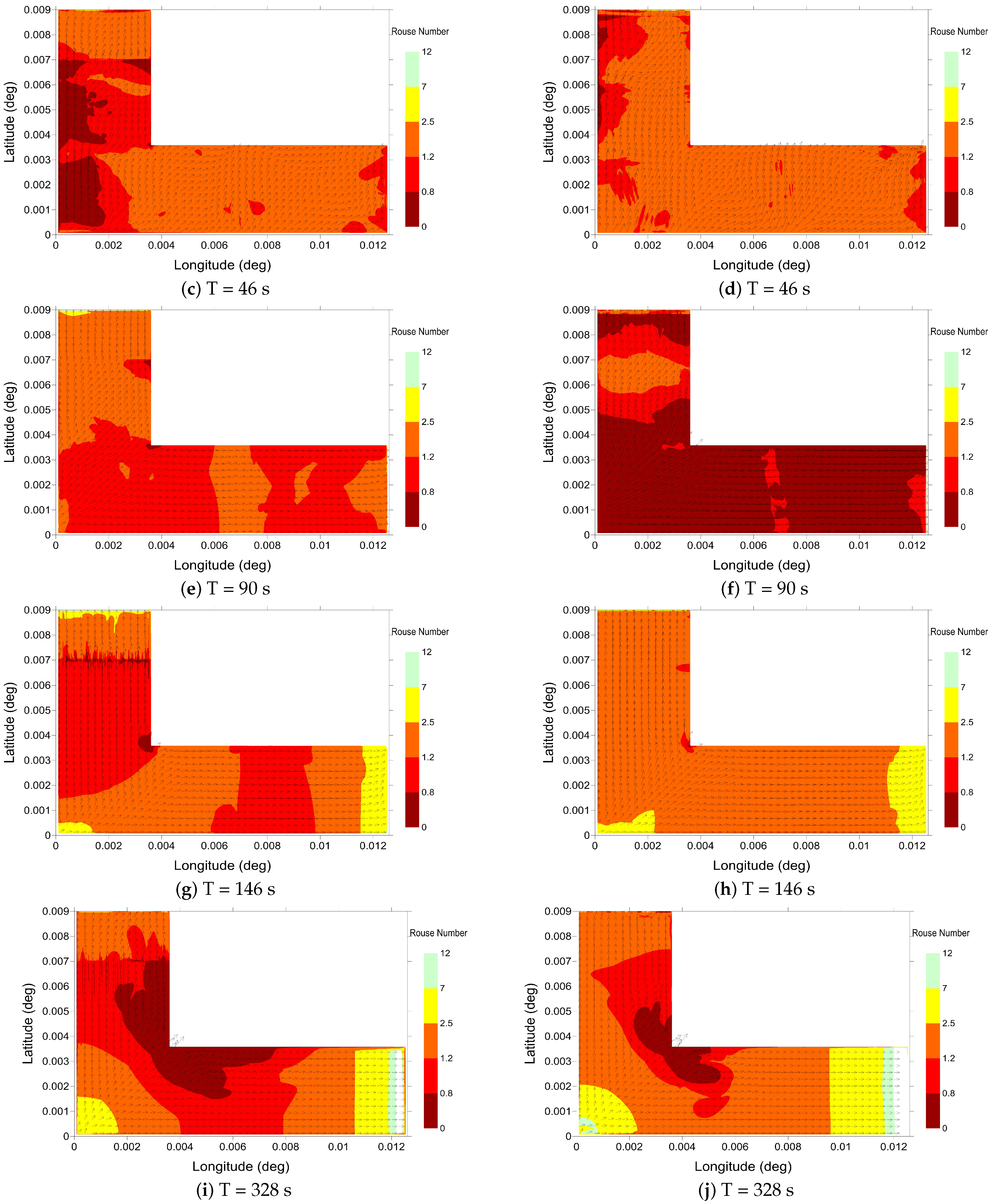
| ν, Kinematic Viscosity | /s |
| g, Gravitational Acceleration | m/ |
| ρ, Density of Water | 1025 kg/ |
| , Density of Sediment Particles | 2650 kg/ |
| Mode of Transport | Rouse Number |
|---|---|
| Initiation of Motion (Deposition) | |
| Bed Load | |
| Suspended Load: (50% Suspended), Density of Water | |
| Suspended Load: (100% Suspended) | |
| Wash Load |
© 2016 by the authors; licensee MDPI, Basel, Switzerland. This article is an open access article distributed under the terms and conditions of the Creative Commons Attribution license ( http://creativecommons.org/licenses/by/4.0/).
Share and Cite
Kian, R.; Velioglu, D.; Yalciner, A.C.; Zaytsev, A. Effects of Harbor Shape on the Induced Sedimentation; L-Type Basin. J. Mar. Sci. Eng. 2016, 4, 55. https://doi.org/10.3390/jmse4030055
Kian R, Velioglu D, Yalciner AC, Zaytsev A. Effects of Harbor Shape on the Induced Sedimentation; L-Type Basin. Journal of Marine Science and Engineering. 2016; 4(3):55. https://doi.org/10.3390/jmse4030055
Chicago/Turabian StyleKian, Rozita, Deniz Velioglu, Ahmet Cevdet Yalciner, and Andrey Zaytsev. 2016. "Effects of Harbor Shape on the Induced Sedimentation; L-Type Basin" Journal of Marine Science and Engineering 4, no. 3: 55. https://doi.org/10.3390/jmse4030055






